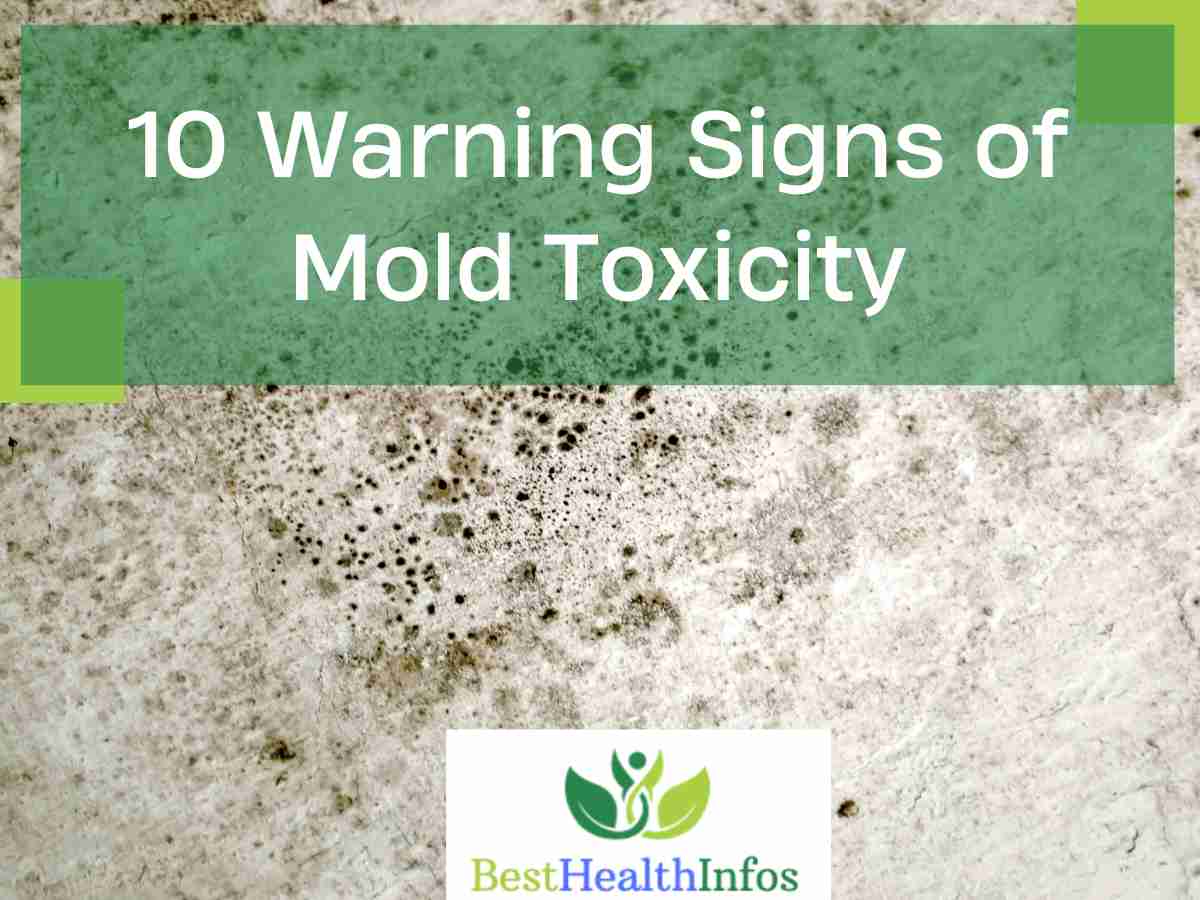Mold toxicity poses health risks often overlooked in homes. Mold can silently thrive, invisible to the naked eye, triggering various health issues. Identifying warning signs is crucial for a timely response. Persistent coughing, sneezing, and unexplained fatigue may indicate mold presence. Additionally, frequent headaches and skin irritations can be red flags.
Also Read: Do Allergies Cause Body Aches?
Transitioning to living spaces, musty odors, and visible mold growth demand immediate attention. Individuals experiencing heightened allergy symptoms should investigate potential mold exposure. Deteriorating indoor air quality and respiratory problems may signal a broader issue.
What Is Mold Toxicity?
Mold toxicity, an intriguing yet potentially dangerous concept, is a condition caused by exposure to specific types of mold. These aren’t your everyday household molds, oh no! We’re talking about “toxic molds” that produce harmful substances called mycotoxins. When inhaled, ingested, or come into contact with the skin, these mycotoxins can wreak havoc on your health.
Also Read: Can Allergies Cause a Cough? Symptoms, Signs, and Causes
Imagine an invisible enemy launching a stealth attack on your body’s systems. Mold toxicity can lead to a plethora of health issues, ranging from minor allergies to severe neurological problems. Its symptoms are often misdiagnosed due to their overlap with other conditions. Remember, knowledge is power! Knowing mold toxicity could be your first step in avoiding this unwanted guest.
Is Mold dangerous?
Definitely! Mold can play the role of the villain in your health story. Certain types of mold, known as “toxic molds,” are infamous for producing harmful mycotoxins. These invisible foes are not to be taken lightly. When you breathe in these molds, they don’t just hang out in your lungs but can infiltrate your bloodstream! Once there, these troublemakers can affect every organ and system in your body, causing many health issues.
Asthma, allergies, inflammation, and even depression are some potential impacts. Mold can also trigger autoimmune responses, turning your body’s defenses against you! And if you think you’re safe because you’re healthy, think again! Mold toxicity can strike anyone, regardless of age or health status. Your immunity is your armor, but mold can be the chink in it. So yes, mold can be dangerous, turning your home into a battleground for health.
Also Read: Recognizing the Link Between Sore Throat and Allergies
10 Warning Signs Of Mold Toxicity
Beware! Mold toxicity might be creeping up on you. Spot these 10 warning signs and take action:
1. Fatigue and Weakness
So, you’re feeling more tired than usual? Are you experiencing a level of weakness that doesn’t align with your daily routine? Watch out because persistent fatigue and unexplained weakness are the crafty disguises of mold toxicity. These silent warriors don’t just attack you in broad daylight. They use stealth, sneaking up on you and robbing you of your energy.
Even simple tasks seem like climbing mountains, don’t they? While these symptoms can be due to other reasons, consider this a red flag if they persist alongside other signs of mold toxicity. Remember, mold toxicity is a master of mimicry, masking itself under common symptoms. So, keep your eyes wide open and be vigilant!
Also Read: 10 Health Benefits of Honeycomb
2. Persistent Headaches or Migraines
The second characteristic in this ‘whodunit’ of mold toxicity is the persistent headache or migraine. These aren’t everyday headaches like a gong reverberating through your skull. Mold Inc.’s trademarks are stubbornness, naggingness, and headache persistence. Imagine having a drummer playing an eternal drum solo in your brain. Frustrating, right? This may be mold toxicity at work, using headaches as its calling card.
Such headaches, often coupled with light sensitivity, may pop up from nowhere, and pain relievers seem to put a dent in them barely. And migraines? They’re the equivalent of a rock concert inside your head, with lights and noise. If you’ve started having more frequent or severe headaches or migraines, mold toxicity could be holding the drumsticks.
3. Sleep Disruptions
Does counting sheep seem impossible these days? Is sleep elusive, slipping through your fingers like water? Or are you waking up groggy, feeling more exhausted than when you hit the hay? If so, mold toxicity might be the puppet master pulling your sleep strings. The mycotoxins it produces can disrupt your sleep patterns, keeping you tossing and turning.
They are like invisible party crashers, disturbing your peaceful slumber party. If you’ve noticed a sudden shift in your sleep habits, mold toxicity might play the lullaby. Just another of its many guises! But remember, disrupted sleep can also mask other health issues. So please don’t blame it on mold toxicity without considering other potential causes.
4. Neurological and Cognitive Issues
Ever feel like you’re walking through a foggy maze? Do your thoughts feel clouded, or are you struggling with memory recall? Well, mold toxicity could be the sneaky intruder. It often creates neurological and cognitive disruptions, messing with your mental acuity. The mycotoxins it produces can tamper with your brain functions, leading to memory issues, confusion, or concentration problems.
Like a cunning thief, mold toxicity can slip into your cognitive world, causing disarray. Imagine it as a naughty child, running amok in a library, scattering books and information. In such a scenario, recollecting information becomes a Herculean task. If your brain’s ‘search engine’ lags, mold toxicity might be the unwanted guest meddling with your WiFi.
5. Mental and Mood Changes
Are you feeling a little off emotionally? Are sudden mood swings and irritability becoming your new norm? Well, take heed! Mold toxicity may be playing with your emotions. Think of it as a puppeteer pulling at your mood strings. Its mycotoxins can mess with your nervous system, leading to anxiety, depression, or sudden mood changes.
It’s like living on a roller coaster, unpredictable and disorienting! And if you feel like you’ve become a jigsaw puzzle, unable to fit your emotions into place, mold toxicity might be scattering the pieces. But remember, mental and mood changes can also signify other health issues. So, wait to give mold toxicity the entire blame.
6. Sinus Issues
Ah, sinus issues, the uninvited guest at your health party! Are you experiencing recurring sinus infections or constant congestion? Does it feel like your nose has become a permanent construction site blocked with rubble? These could be the dirty handprints of mold toxicity—picture mold spores as tiny, invisible intruders setting up camp in your sinuses.
They’re like unwelcome tourists, overstaying their welcome and causing mayhem! And guess what? They love to party, throwing inflammation parties in your nasal passages. This leads to a congested nose, sinus headaches, and even chronic sinusitis. Yes, that constant sniffling and sneezing might not be just seasonal allergies.
7. Respiratory Problems
Have you ever felt like running a marathon sitting on your couch? Is each breath a struggle, like sucking air through a straw? Or are you coughing more than a seasoned stand-up comedian? Hold onto your hats, folks; mold toxicity might be performing. These sneaky mycotoxins can infiltrate your lungs, playing a twisted game of hide and seek.
They nestle in your airways, making breathing a Herculean task. Like the villain in a horror movie, they lurk in the shadows, launching sudden attacks on your respiratory system. This could lead to constant wheezing, shortness of breath, or even bronchitis. Chronic respiratory problems with no discernible cause? Mold toxicity could be the phantom antagonist in this tale.
8. Gastrointestinal Distress
Is your stomach playing up? Frequent trips to the restroom becoming a norm? Mold toxicity could be your uninvited guest. It’s a culinary critic causing an upheaval in your gastrointestinal tract. Mycotoxins can trigger a riot in your stomach, causing nausea, vomiting, or diarrhea.
\It’s like a master chef gone rogue, stirring up a storm in your belly. But remember, food allergies or infections can also cause gastrointestinal distress. So, mold toxicity may not be the only villain in this plot. Regardless, if these symptoms persist, it’s time to roll up your sleeves and address the issue.
9. Muscle Aches and Joint Pain
Feeling like an old rocking chair creaking at every movement? Or like a rusty bicycle, groaning at each pedal? Welcome to the ‘Mold Toxicity Pain Parade’! Mycotoxins from mold can tiptoe into your system, orchestrating an inflammatory response. This can cause muscle aches and joint pain that seem to emerge from thin air.
It’s like having a mini construction crew inside your body, hammering away at your muscles and joints and feeling stiff or experiencing joint pain that’s comparable to arthritis. Mold toxicity might be the sneaky puppeteer pulling at your pain strings. It’s a bit like a naughty child poking you constantly. But remember, muscle aches and joint pain could signal other health issues, so don’t jump to conclusions.
10. Allergic Reactions
Is skin feeling like a prickly cactus? Are eyes watering like Niagara Falls? Welcome to the Allergy Club, courtesy of mold toxicity. Imagine mycotoxins as invisible nettles, brushing against your skin, causing hives, rash, or dermatitis. They’re like pesky mosquitos, leaving behind itchy, red bumps. And your eyes? The mycotoxins treat them like an emotional movie, evoking a waterfall of tears, itchiness, and redness.
This isn’t your regular soap opera but ‘The Mold and the Miserable.’ And let’s remember those sneeze marathons and stuffy noses! That’s mold toxicity playing the symphony of allergies. It’s like being in a boxing ring, fighting an invisible opponent. But remember, other allergens can trigger allergic reactions, so mold toxicity might not be the only suspect. Other allergens can trigger allergic reactions.
How Can You Prevent Mold Toxicity?
Say no to mold toxicity with these practical tips!
1. Stay vigilant for mold:
Look for fuzzy patches or unusual stains on walls and ceilings.
2. Maintain good ventilation:
Ensure your home is well-aired to prevent mold growth.
3. Embrace the sunlight:
Open your curtains and let in natural light – mold hates it!
4. Keep it dry:
Avoid damp environments in your home. Use dehumidifiers if needed.
5. Prompt repairs:
Fix any leaks or water damage promptly. Mold loves these areas.
6. Regular cleaning:
Regularly clean and disinfect areas prone to mold.
7. Stay informed:
Understand which materials are more susceptible to mold and use alternatives when possible.
8. Regular check-ups:
Have professional mold inspections annually. Better safe than sorry!
9. Remove visible mold:
If mold appears, remove it immediately. Keep it from settling in!
10. Educate yourself:
Learn about mold toxicity, its signs, and preventative measures.
Remember, prevention is better than cure. Say goodbye to mold and hello to health!
How to detoxify after mold exposure?
Are you feeling like a mold magnet? Here’s how to detoxify:
1. Hydrate, hydrate, hydrate! Water is your best detoxifying agent, flushing out toxins from your body.
2. Boost your diet with antioxidant-rich foods. Think colorful fruits and veggies!
3. Don’t shy away from probiotics. Feed your gut with good bacteria to strengthen your immunity.
4. Sweating it out can help. Opt for a sauna session or engage in regular exercise.
5. Remember to rest and recover. Quality sleep allows your body to heal itself.
6. Consider professional help. Consult a healthcare provider about possible detoxifying treatments.
7. Practice deep breathing exercises. Oxygenate your body to help eliminate toxins.
8. Consider supplements to support your body’s detox process. Just be sure to consult a healthcare professional first!
Detoxing after mold exposure isn’t a walk in the park, but these steps can make it easier.
How long does it take to detoxify after exposure?
Detoxing after mold exposure is different from a sprint, folks! Think of it more like a marathon, where your resilience and patience genuinely shine. It’s a dance that varies from person to person, depending mainly on:
1. The length of exposure:
The longer the exposure, the slower the detox.
2. Your immune system’s robustness:
The stronger the immunity, the quicker the recovery.
3. The mold type:
Some molds play tougher, extending the detox time.
4. The treatment used:
Efficient treatments can accelerate the detox process.
Typically, mild exposures may need a few weeks to months. But hold your horses; extensive exposure might require months or even a year. Yes, it’s a waiting game. But remember, your body’s a champion, fighting off these invisible invaders. It’s like a silent battlefield where your health reclaims its victory step by step. Don’t rush the process. Your body knows best!
Frequently Asked Questions
How do you tell if mold is making you sick?
Common symptoms of mold exposure include respiratory issues, nasal congestion, throat irritation, coughing, and skin irritation. However, these symptoms can vary widely.
How do you know if you have toxic mold in your body?
The presence of toxic mold in the body is not a recognized medical condition. Mold-related illnesses usually result from inhaling or coming into contact with mold spores, not from the mold itself residing in the body.
What are the warning signs of mold toxicity?
Warning signs may include persistent respiratory issues, allergies, skin rashes, fatigue, headaches, and eye irritation. Severe cases may lead to neurological symptoms and immune system suppression.
What are the neurological symptoms of mold exposure?
Neurological symptoms may include difficulty concentrating, memory problems, confusion, dizziness, and mood changes. However, these symptoms can result from various conditions, so a thorough medical evaluation is essential.
How can I test myself for mold toxicity?
Testing for mold toxicity is complex and may involve blood, urine, or testing the environment for mold presence. Consult with a healthcare professional or environmental specialist for guidance.
Can your body recover from toxic mold exposure?
Recovery is possible with prompt identification and removal of the source of mold exposure. Treatment may include addressing symptoms, improving indoor air quality, and seeking medical advice. However, individual responses to mold exposure vary.
Conclusion
In conclusion, recognizing mold toxicity signs is crucial for a healthier home. If any symptoms emerge, prompt action is vital. Firstly, consult a professional to assess and eliminate the mold source. Swift remediation prevents health complications. Moreover, maintaining proper ventilation and reducing humidity thwart mold growth.
Regular inspections and cleaning contribute to a mold-resistant environment. Therefore, be vigilant and address potential mold issues promptly. Remember, your well-being depends on a mold-free living space.
Awareness and proactive measures are the keys to a mold-safe home. Stay informed, take action, and enjoy a healthier living environment for you and your loved ones.
Sources:
https://www.epa.gov/mold/mold-course-chapter-1



